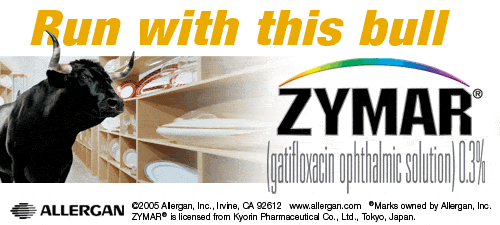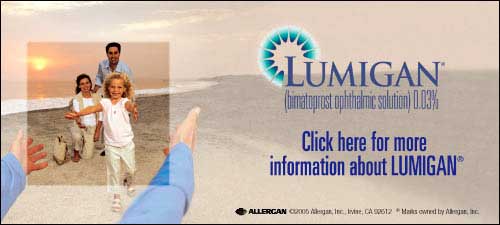
| |
Volume 5, Number 43
|
Monday, October 31, 2005
|
| In this issue: (click heading to view article) | ||||
| Dietary n-3 and n-6 Fatty Acids and Dry Eye Syndrome in Women | ||||
| CCT Heritability: The Twin Eye Studies | ||||
| Cohesive Tensile Strength of Human LASIK Wounds | ||||
| Briefly | ||||

|
||

|
||

|
||
|
||||||
|
||||||||||||||
| Subscriptions: Review of Ophthalmology Online
is provided free of charge as a service of Jobson Publishing, LLC. If
you enjoy reading Review of Ophthalmology Online, please tell a
friend or colleague about it. Forward this newsletter or send this address:
[email protected].
To change your subscription, reply to this message and give us your old
address and your new address; type "Change of Address" in the
subject line. If you do not want to receive Review of Ophthalmology
Online, reply to this message and type "Unsubscribe: Review of Ophthalmology
Online" in the subject line. Advertising: For information on advertising in this e-mail newsletter or other creative advertising opportunities with Review of Ophthalmology, please contact publisher Rick Bay, or sales managers James Henne, Michele Barrett or Kimberly McCarthy. News: To submit news, send an e-mail, or FAX your news to 610.492.1049 |















